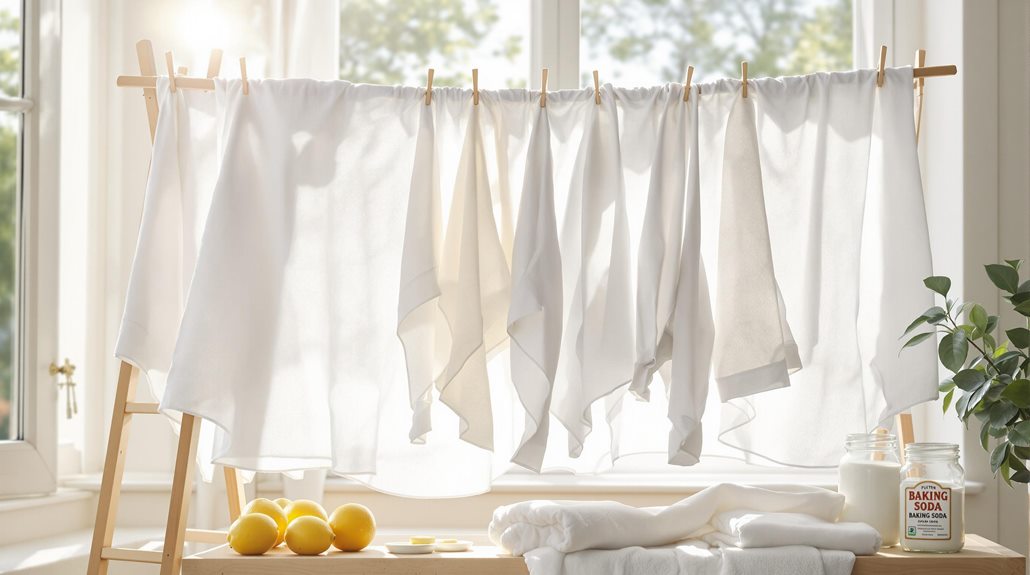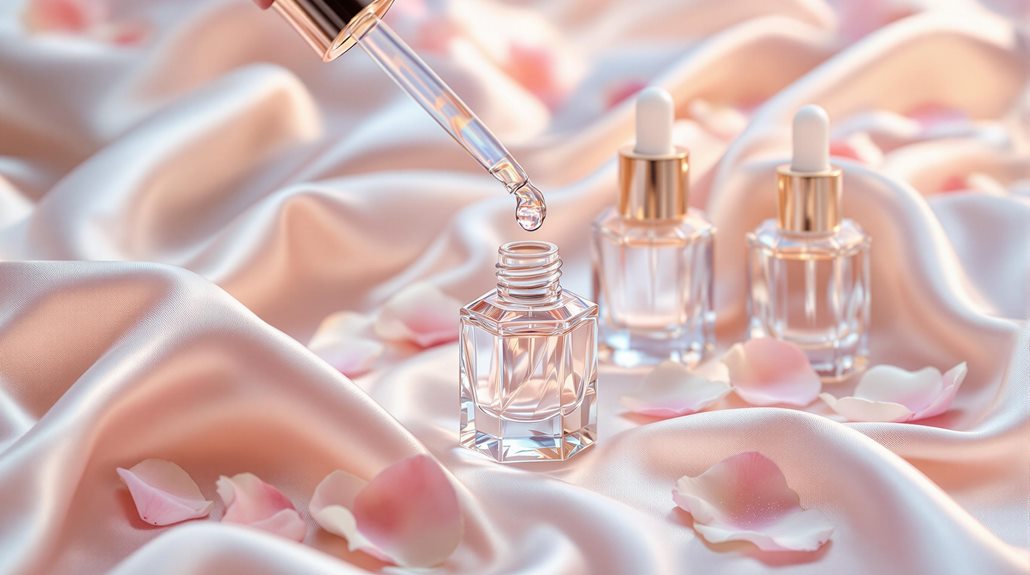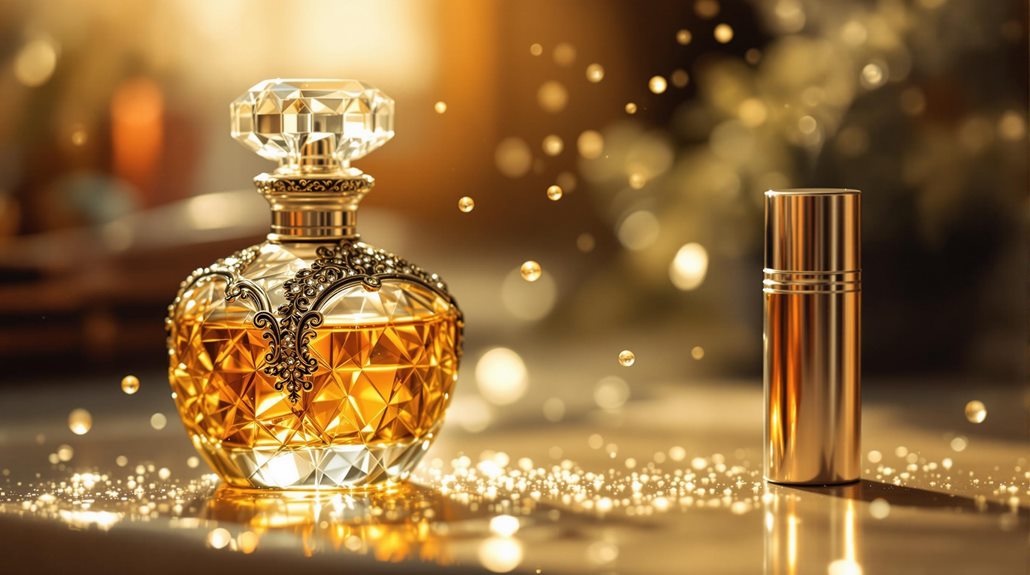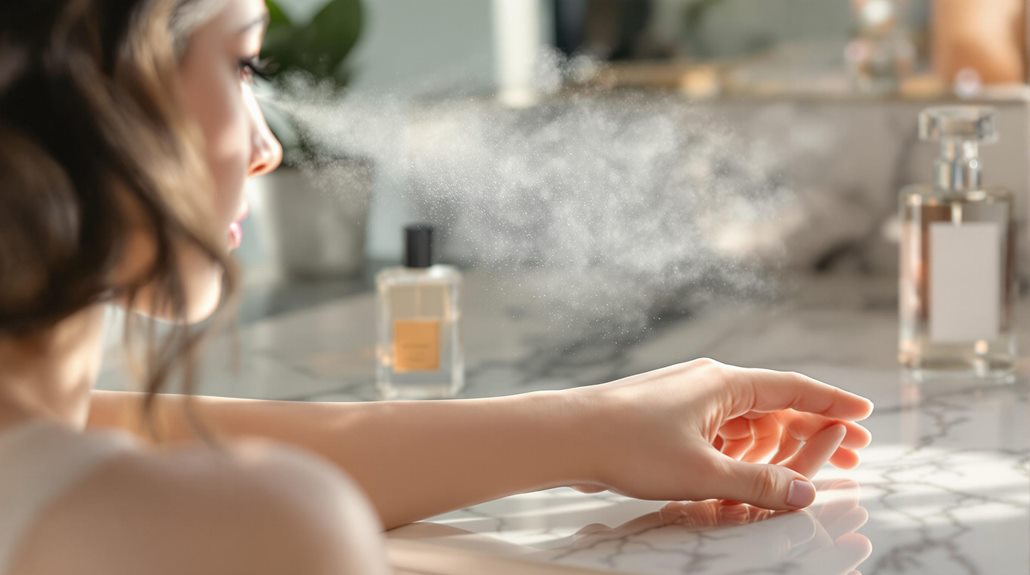How Many Sprays of Perfume Is Enough? a Guide to Perfect Application
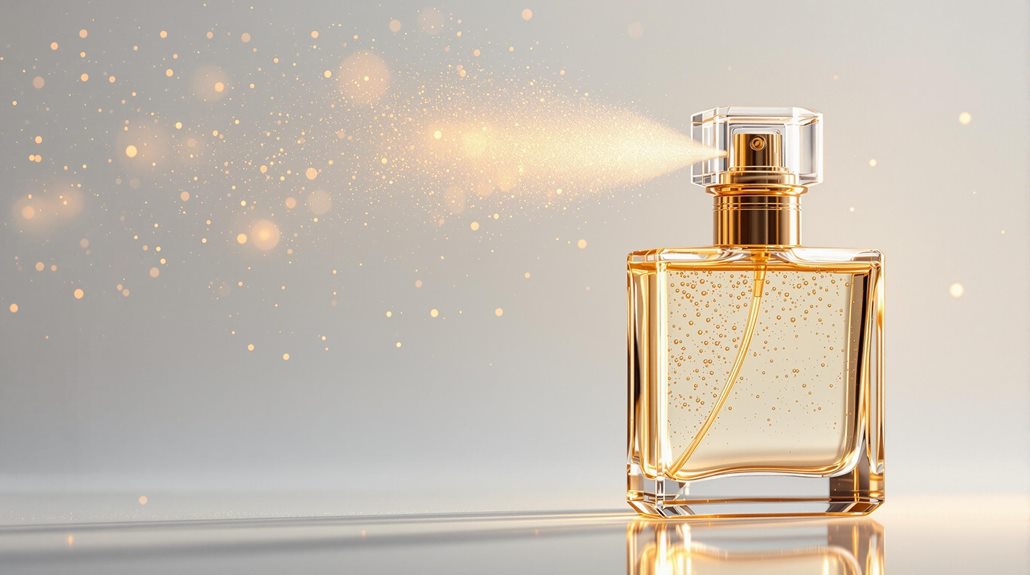
The right number of perfume sprays depends on your fragrance's concentration level. For eau de parfum (EDP), you'll need just 1-2 sprays, while eau de toilette (EDT) requires 3-4 sprays, and cologne needs 4-5 sprays for ideal effect. Apply your fragrance to pulse points like wrists, neck, and behind ears, where body heat helps activate and diffuse the scent. Don't rub your wrists together, as this breaks down the fragrance molecules. Climate also affects your perfume's performance - warmer weather calls for more frequent application. Understanding these key factors will help you command the art of perfect perfume application.
Understanding Fragrance Concentrations
When choosing a perfume, understanding fragrance concentrations helps you determine how much and how often to apply. The concentration level directly affects how long your perfume will last and how many sprays you'll need for ideal results.
Eau de Parfum (EDP) contains 15-20% perfume oils, making it your strongest everyday option. You'll only need 1-2 sprays of EDP to achieve lasting fragrance. Pure Parfum offers even higher concentrations at 15-40%, requiring minimal application for maximum impact. If you're using Eau de Toilette (EDT), which has a 5-15% concentration, you'll need 4-6 sprays to achieve similar results.
For lighter options like Eau de Cologne (EDC) with 3-8% concentration or Eau fraîche, plan on using 4-5 sprays. Understanding Perfume concentrations helps you make informed choices about application methods. To enhance and prolong your fragrance, apply it to pulse points where your skin naturally warms the scent. Remember that higher concentrations mean you'll need fewer sprays, while lighter formulations require more frequent application throughout the day.
Pulse Points and Application Areas
Strategic placement of perfume on your pulse points maximizes its impact and longevity. These warm areas of your body, including your wrists, neck, behind the ears, and inner elbows, naturally emit heat that helps activate and diffuse the fragrance throughout the day. When you're applying perfume, it's crucial to spray directly onto the skin rather than into the air and walk through the mist.
For the most effective perfume application, start by moisturizing your skin, as this helps trap the natural oils and fragrance molecules. Apply 2-3 sprays depending on the concentration of your perfume, focusing on your primary pulse points. Don't rub your wrists together after spraying, as this can break down the fragrance molecules and alter the scent. Remember to avoid applying perfume to areas that'll be exposed to direct sunlight, as this can affect the fragrance's chemistry. While it might be tempting to spray perfume on your clothes, it's best to focus on your skin to prevent staining and guarantee the fragrance develops properly with your body's chemistry.
Perfume Spray Count Guidelines
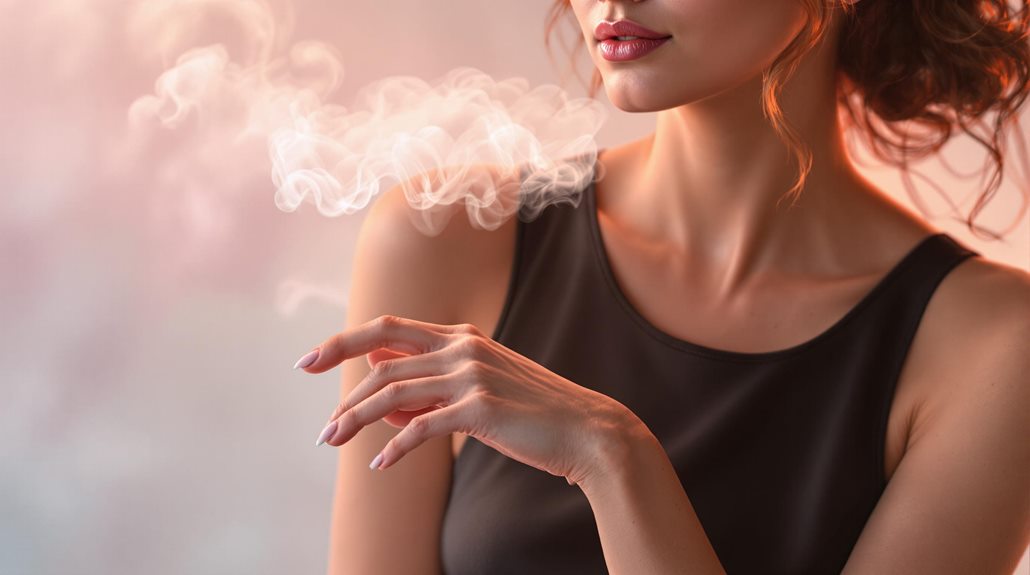
Understanding the right number of perfume sprays can greatly impact your fragrance's effectiveness throughout the day. The ideal number of sprays varies depending on the concentration of your fragrance and where you plan to wear it.
For eau de parfum, you'll want to limit yourself to 1-2 sprays since it's highly concentrated. If you're using eau de toilette, aim for 3-4 sprays to achieve the desired effect. Cologne wearers should apply 4-5 sprays to make their scent last longer due to its lower concentration.
To maximize how long your perfume will last, focus on applying it to your pulse points - wrists, neck, and behind your ears. Your body heat in these areas helps project the scent more effectively. Consider your skin type and the climate when deciding on the number of sprays, as these factors affect how the fragrance develops.
For better longevity, you can layer your scent using complementary body products. Remember that the occasion matters too - you might want fewer sprays for the office and more for an evening out.
Environmental Impact on Scent
Environmental factors can make or break your fragrance's performance throughout the day. When deciding on the perfect number of Sprays of Perfume to apply, you'll need to contemplate temperature, humidity, and your personal activities.
In warmer climates, you might need a few more sprays since your fragrance will evaporate more rapidly. However, if you're in a cooler, drier environment, fewer sprays will suffice as the scent's longevity naturally extends. The concentration of your fragrance also matters - an Eau de Cologne may require additional sprays compared to higher concentration formulas, especially in challenging weather conditions.
To maximize your perfume's performance, consider when and where you'll be wearing it. If you'll be spending much time outdoors, direct sunlight exposure can weaken your fragrance faster. Similarly, water exposure and perspiration can drastically impact how long your scent lasts. For optimal results, Spray Perfume in climate-controlled environments where humidity levels are moderate. On particularly hot or humid days, you might need to reapply more frequently, while in ideal conditions, your initial application will last longer.
Common Application Mistakes
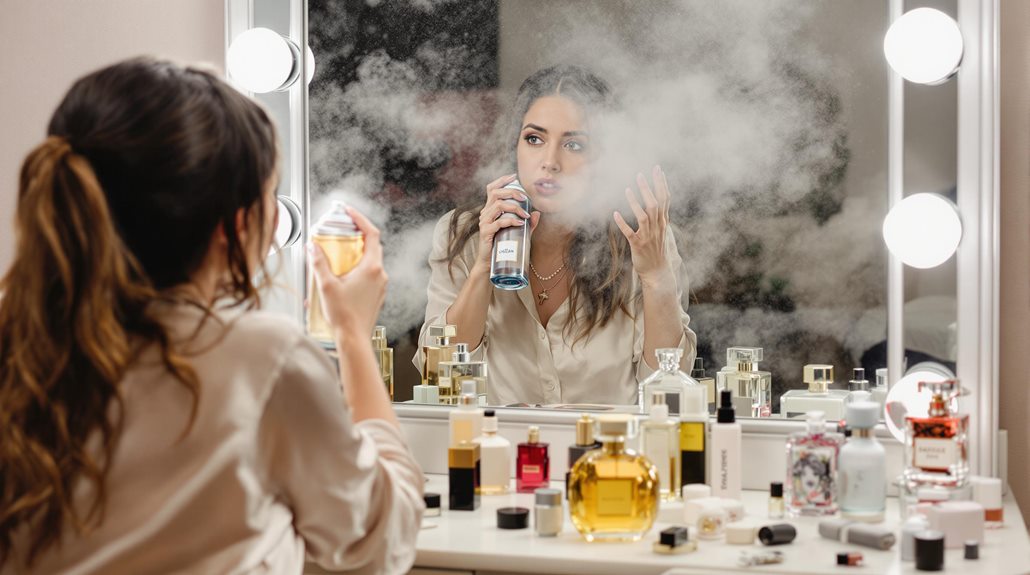
Many fragrance enthusiasts make simple yet significant mistakes when applying their favorite scents. One of the most common errors is to spray too much perfume, creating an overpowering scent that can cause discomfort and headaches for those around you, especially in confined spaces.
When applying perfume, you'll want to avoid rubbing your wrists together after spraying, as this breaks down the fragrance molecules and reduces how long the scent throughout the day. Your skin tends to absorb perfume better when you let it dry naturally. The concentration of perfume should match both the occasion and your personal preference, but remember that less is often more.
Another pivotal mistake is spraying perfume directly onto clothing. This can leave unsightly stains and affect the way the fragrance develops. Instead, apply it to your pulse points and let it dry completely before dressing. Finding the right balance takes practice, but when done correctly, your signature scent lasts throughout the day without overwhelming others. Your sense of smell may become accustomed to your perfume, but that doesn't mean others can't detect it strongly.
Seasonal Perfume Application Tips
Seasonally adjusting your perfume application guarantees ideal scent performance throughout the year. The number of sprays varies depending on temperature and humidity levels, requiring you to adapt your fragrance routine accordingly.
During summer months, you'll want to use fewer sprays since warm temperatures naturally amplify your perfume's projection. For daytime wear, apply your fragrance on pulse points, reducing the usual amount by 1-2 sprays. In humid conditions, light, fresh scents work best, and you should similarly decrease the number of sprays to prevent the scent from becoming overwhelming.
Winter calls for a different approach. The cool, dry air can diminish your perfume's staying power, so you'll need to adjust the number of sprays upward by 1-2 applications. Choose richer fragrances that last longer, and consider layering with scented body lotions to create unique scent combinations that endure throughout the day. Keep in mind that storing your perfume away from direct sunlight and extreme temperatures will help maintain its integrity, ensuring consistent performance as you adapt your application technique to each season's specific requirements.
Conclusion
You're now equipped to apply perfume like a pro. Remember that 2-4 sprays are typically sufficient for eau de toilette, while 1-2 work best for stronger eau de parfum. Pay attention to your pulse points, consider the season and setting, and don't overdo it. With these guidelines in mind, you'll achieve the perfect fragrance level that leaves a memorable impression without overwhelming others.

